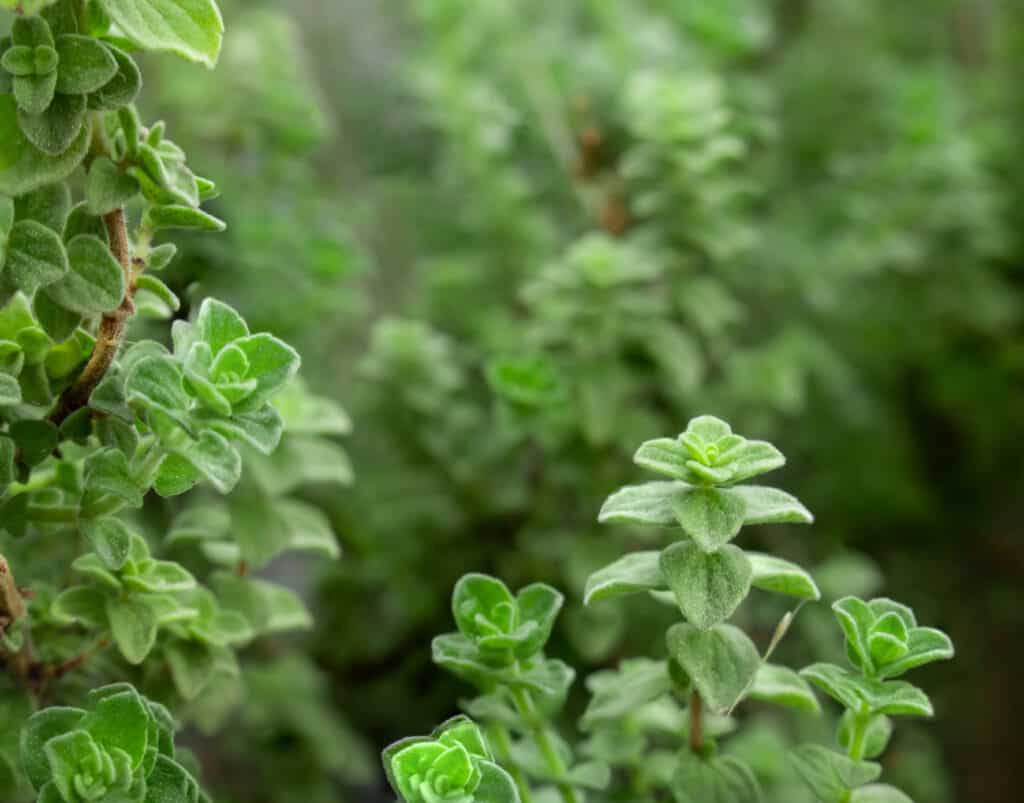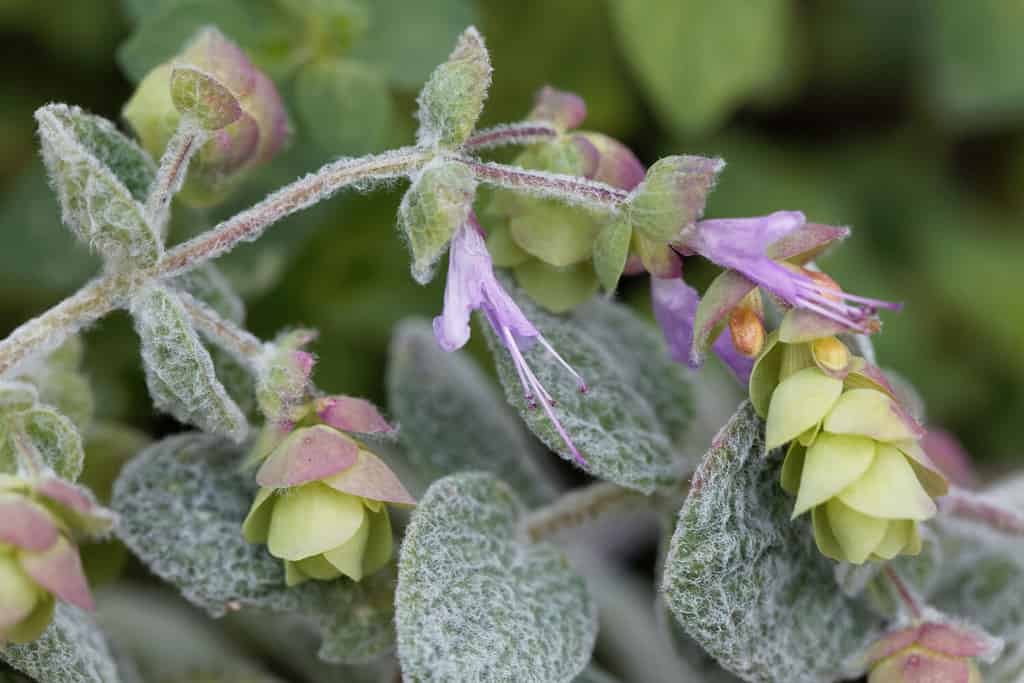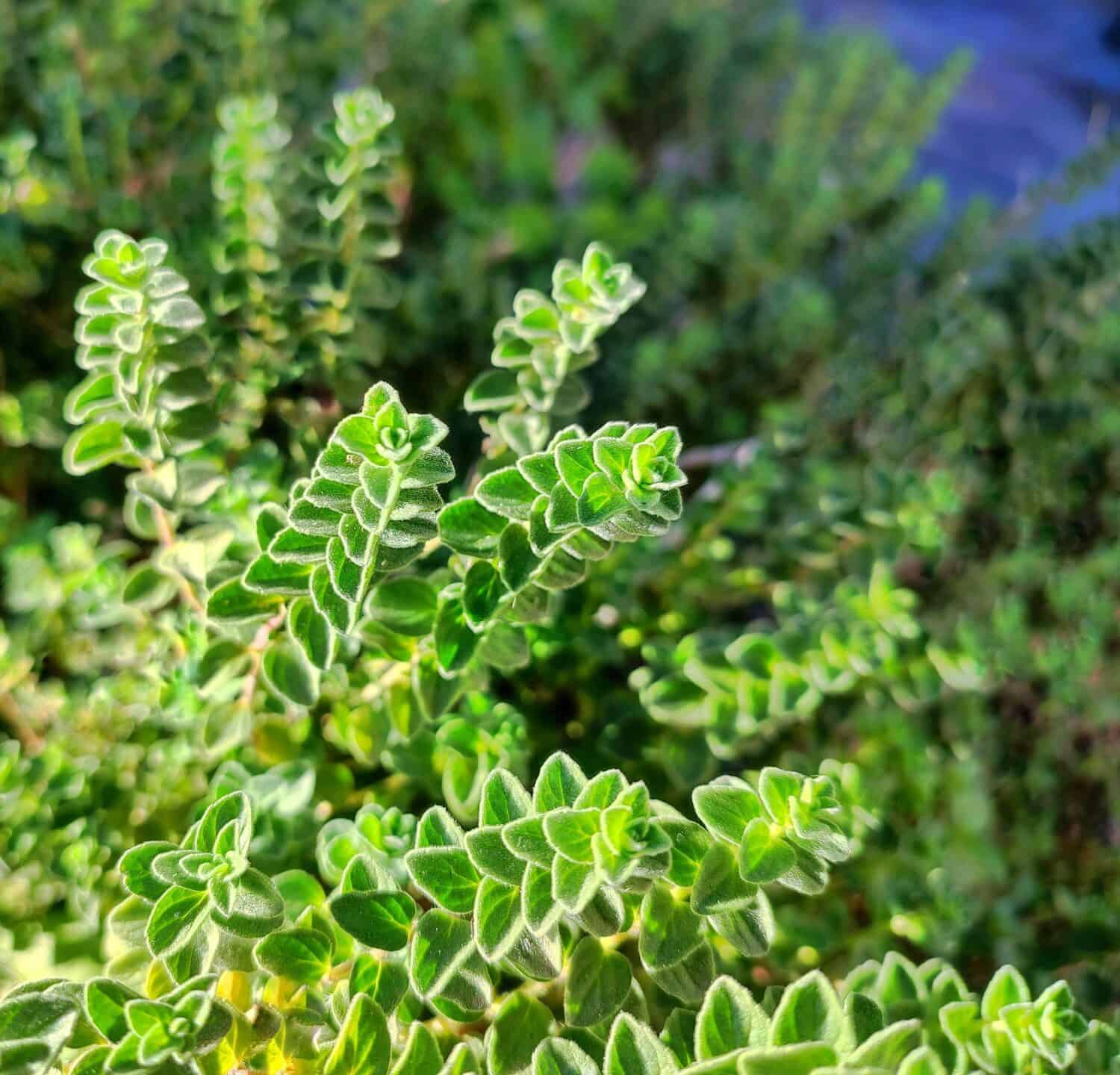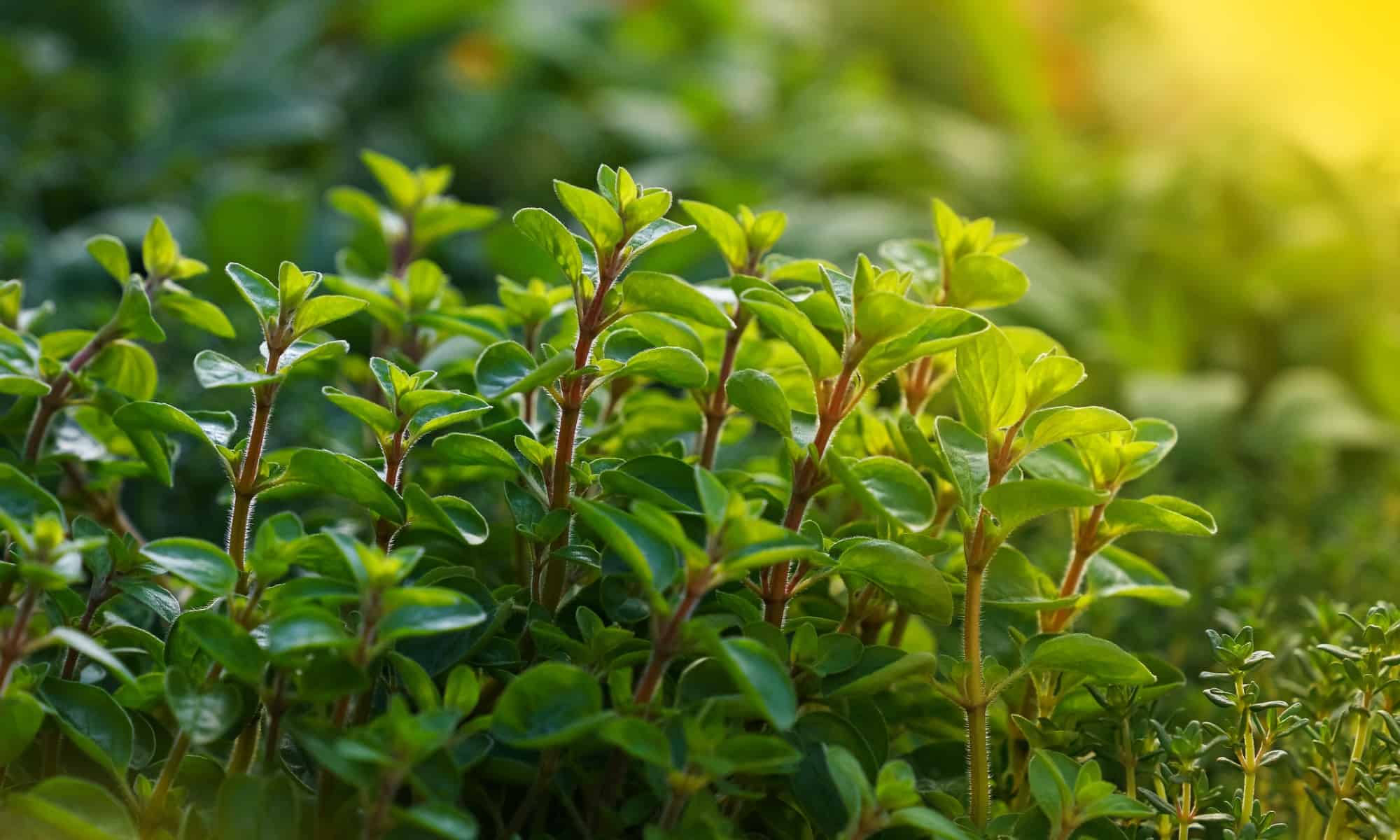Marjoram is a sweet, fragrant herb often used in soups, salads, sauces, and herbal teas. This herb is easy to grow and adds a mild earthy flavor when used in cooking. In this article, we’ll cover how to grow marjoram and how to propagate and preserve it so you never run out.
Let’s dig in!
What’s the Difference Between Oregano and Marjoram?
Let’s start by addressing the elephant in the room: are oregano and marjoram the same thing?
The confusing answer: yes and no.
Marjoram, scientifically known as Origanum majorana is one of 45 species belonging to the oregano species Origanum.
Many cultures use the terms oregano and marjoram interchangeably. For example, common oregano (Origanum vulgare) is called wild marjoram in some Middle Eastern regions.
However, when differentiating between these overlapping herbs, sweet marjoram (Origanum majorana) is considered a “true” marjoram. Sweet marjoram is uncharacteristically mild and sweet compared to most oregano species.
On the bright side, both oregano and marjoram have the same low-maintenance growing habits and culinary applications. If you substitute one for the other, remember that oregano is much stronger than marjoram; adjust your amounts accordingly.

Oregano, pictured here, is more aromatic and flavorful than marjoram, which is a unique species of oregano!
©Artem Kontratiev/Shutterstock.com
How to Grow Marjoram
Marjoram can be grown annually in most USDA zones. However, it thrives as a perennial in USDA zones 9-10.
To ensure continuous growth, you can cultivate marjoram in pots and bring them indoors for overwintering. Alternatively, you can cultivate marjoram in an outdoor herb garden during the summer.
Here’s a comprehensive guide on growing marjoram from seed:

, or hop marjoram (pictured here), is another oregano species. However, only “sweet marjoram” is considered true marjoram.
©ChWeiss/Shutterstock.com
1. Soil Preparation
Before planting your marjoram, get your soil ready for success! Start by clearing away any rocks and debris from the planting area.
For optimal growth, marjoram prefers well-draining soil enriched with organic matter. Mix in plenty of compost or manure to provide those essential nutrients. Marjoram thrives in neutral to slightly alkaline conditions.
If you’re planning to grow marjoram outdoors, choose a sunny spot for your herb garden. Marjoram loves basking in the sunlight, so find a location that receives full sun exposure throughout the day.
2. Planting Method
If you live in a chilly climate, start your marjoram seeds indoors about 6-8 weeks before the last frost of the season. If the risk of late-season frost has passed, sow the seeds directly into the soil.
Give marjoram seeds plenty of space to spread. Like oregano, mature marjoram plants can grow as wide as 18 inches. As your seedlings sprout and flourish, you should thin them out to give each plant enough space to thrive.
Cover the marjoram seeds with about a quarter to a half inch of soil, water them, and let the sun do its work.
3. Watering
Marjoram will survive a few missed waterings, but you should give it a weekly soak during dry periods. Test the top inch of the soil. If it’s dry, thoroughly water your marjoram.
It’s important to note that potted marjoram will require more frequent watering than it would in the garden, as the soil will dry quicker. Ensure the pot has ample drainage to prevent root rot.
4. Care and Maintenance
Marjoram is low-maintenance and easy to care for, making it a perfect choice for beginners. You can leave it to grow and expect a great harvest.
However, you can improve your yield by trimming back the sprouts when they reach 4-6 inches tall. This trim will encourage fullness and reduce legginess, so you get more delicious leaves per plant.
5. Harvesting
You can harvest marjoram continuously throughout the season. Use clean, sharp scissors to trim the leaves as needed.
If your plant shows signs of flowering, it’s time to harvest the rest of the leaves. Like many herbs, the flavor lessens when the plant goes to seed.
6. Overwintering
Marjoram isn’t quite as hardy as some oregano varieties and will only come back as a perennial in temperate zones that emulate its Mediterranean origins.
Overwinter your plant by deadheading and transplanting them into indoor pots for the cold months. Alternatively, you can collect the seeds and start from scratch next year!
How to Propagate Marjoram
If you’re eager to keep your marjoram plants thriving and have an endless supply, you’ll be happy to know that you can propagate marjoram for continuous growth.
First, locate a healthy marjoram plant and trim a stem about 4-6 inches from the top. Place the cut end of the marjoram stems into a cup of water. Change the water every few days to keep it fresh.
Over time, the marjoram stem will start developing roots in the water. It’s a sign that your plant is ready for soil.
Instead of using water, you can also place the cut end of the marjoram stem directly into the soil. To give it an extra boost, dip the end of the stem in the rooting hormone.
After a few weeks, the propagated stem should start to show new leaf growth and resistance when gently pulled upward.

Sweet marjoram: also known as Knotted and Pot marjoram, its botanical name is
Origanum majorana.
©The_AA’s/Shutterstock.com
How to Dry Marjoram
While marjoram is delicious and nutritious, you may not want to eat it every day. Fortunately, you don’t have to.
Preserve your extra marjoram by hanging it to dry and using the leaves to season your dishes all winter long.
Here’s a step-by-step guide to drying your marjoram:
- Carefully cut the marjoram plants at the stem, leaving a reasonable length for handling.
- Gather your cut marjoram plants and bundle them together at the stem. Use a string or an elastic band to secure the bundle.
- Find a warm and dry area in your home. Ideally, you want a spot where there is good airflow. Hang the marjoram bundles upside down in this location.
- The leaves usually take around 6-8 weeks to dry completely. Keep an eye on the bundles and ensure they are not exposed to any moisture during this time.
- Carefully take down the bundles once the marjoram leaves are dry and brittle. Remove the leaves from the stems, crumbling them gently with your fingers. Discard any tough or discolored leaves.
- Transfer the dried marjoram leaves into an airtight container, sealing it tightly.
You can also dry marjoram with a dehydrator or oven, but the hanging method preserves the flavor better.
Thank you for reading! Have some feedback for us? Contact the AZ Animals editorial team.








